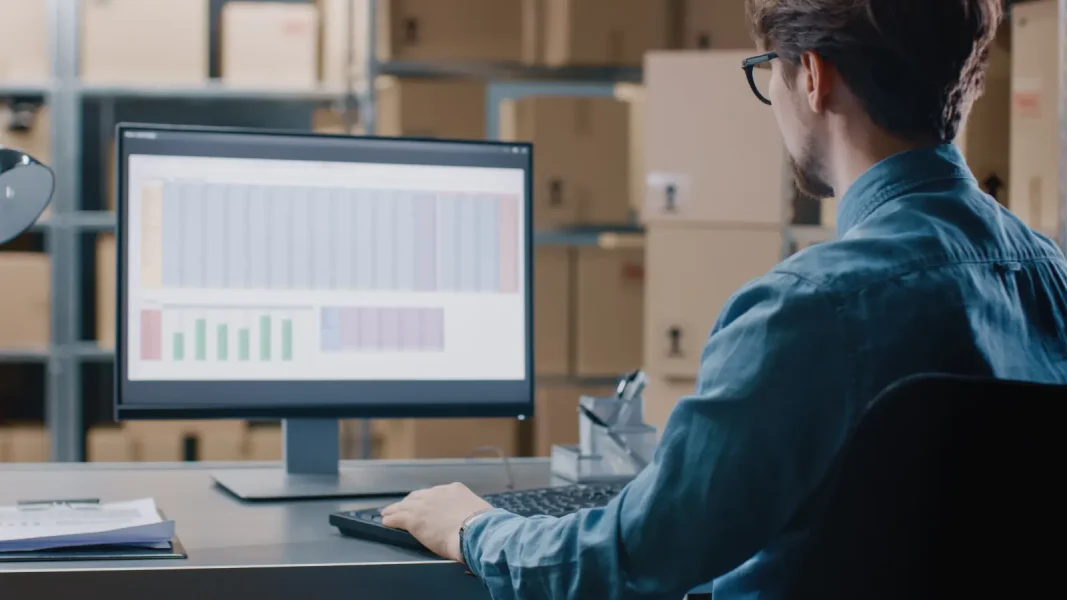In 20 years, digital security in retail has become more crucial than ever. The role of the CIO has undergone significant evolution to adapt to emerging technological challenges. With the rapid rise of digital technologies, the threats facing retail businesses have also increased. Ransomware attacks, customer data theft, and sophisticated cyberattacks have become commonplace.
Faced with this, CISOs must broaden their field of vision to anticipate and counter these threats, while ensuring the continuity of operations.
From the undisputed guardians of customer information confidentiality to architects of complete digital transformation, CISOs are shaping a new horizon for security in retail.
This article explores the trends that are redefining the retail security landscape and how CISOs are playing a central role in protecting data and preserving consumer trust.
We will discover the multiple facets of their commitment, from securing the supply chain to promoting a responsible digital ecology, to understand how they orchestrate a balance between technological innovation and environmental responsibility.
By following this evolution, we will also anticipate the future challenges that CISOs will face in a constantly changing retail environment.
Customer Data Protection: Guardians of Confidentiality
In 20 years, the role of CIOs has considerably strengthened, placing the protection of customer data at the top of their priorities. Faced with constantly evolving cybersecurity, these experts are engaged in implementing robust protection measures to guarantee the confidentiality of sensitive information.
Compliance with regulations, in particular the General Data Protection Regulation (GDPR), has become an essential imperative for retail companies. CISOs lead their teams in building strong defenses, while ensuring that each initiative strictly adheres to data protection standards. Compliance with regulations is no longer simply a legal obligation, but rather the foundation on which customer trust is built.
Among the protection strategies implemented, end-to-end encryption emerges as an essential barrier against potential threats. By securing data throughout its journey, from point of collection to use, CISOs ensure that only authorized parties have access to this crucial information. Multi-factor authentication is also becoming a standard, increasing the security of access to systems and databases containing customer data.
Collaboration between CISOs and marketing teams has become a key component of the overall security strategy. While the personalization of customer experiences is at the heart of marketing teams’ concerns, CISOs ensure that this personalization never compromises data security. Strict protocols are in place to ensure that data required for personalization is only accessible in a secure manner, without exposing customers to potential risks.
The Power of AI in the Service of Digital Security
For some years now, Artificial Intelligence has been emerging as a major asset in CIOs’ arsenals, as they recognize its potential to anticipate and counter emerging threats, fundamentally transforming traditional approaches to cybersecurity.
Predictive analysis of behavioral patterns is becoming an essential pillar of CISO strategy. By integrating AI-based solutions, they are able to anticipate trends and detect unusual patterns in data traffic. By integrating AI-based solutions, they are able to anticipate trends and detect unusual patterns in data traffic.
Proactive anomaly detection is another crucial aspect of using AI in digital security. AI-powered systems are capable of analyzing user, application and device behavior in real-time, quickly identifying any abnormal behavior. This increased responsiveness significantly reduces the time needed to identify and neutralize threats, thereby strengthening systems resilience.
Automated incident response represents a significant advancement enabled by AI. CISOs are investing in machine learning tools that can make fast and accurate decisions in the event of an incident. This includes the ability to automatically isolate compromised systems, block unauthorized access, and even deploy security patches in real time. This automation frees human teams from repetitive tasks, allowing them to focus on more strategic aspects of security.
Furthermore, CISOs recognize the need to invest in machine learning tools capable of constantly adjusting their algorithms in line with evolutions in cyber threats. This agility helps you stay ahead of cybercriminals’ tactics, ensuring continued protection against ever-evolving threats.
Securing Digital Supply Chains
With the democratization of the use of digital tools in all company departments, including the supply chain, CIOs need to focus their security efforts on the entire supply chain. Indeed, in a world where speed and efficiency are crucial, CISOs are redefining their role to guarantee process security, by exploiting cutting-edge technologies such as blockchain.
Blockchain, with its immutable and decentralized nature, offers unrivalled product traceability throughout the supply chain. CISOs leverage this technology to establish transparent and tamper-proof records, thereby significantly reducing the risk of counterfeiting. This increased transparency builds consumer confidence, as they can now follow the entire journey of a product, from manufacturing to delivery.
End-to-end security is becoming a major priority for CISOs engaged in protecting supply chains. By integrating advanced security protocols at every stage, from the manufacturing process to final delivery, CISOs ensure comprehensive protection against potential threats. This includes implementing robust encryption mechanisms, secure authentication and strict access controls at every critical point in the supply chain.
Real-time monitoring of suspicious activity is another critical aspect of CISO security strategy. By leveraging advanced monitoring technologies and data analysis systems, they are able to quickly identify any anomalies or unusual behavior along the supply chain. This increased reactivity allows immediate intervention in the event of a threat, thus limiting potential damage.
Rationalizing IT Costs: Towards Agile and Economical Infrastructures
The constant pressure to reduce IT costs while maintaining a high level of security is pushing CIOs to adopt innovative approaches. In this quest for efficiency, virtualization and Cloud Computing are emerging as major allies, allowing CISOs to create agile and economical infrastructures.
CISOs are turning to virtualization to optimize the use of IT resources. By deploying virtual environments, they can consolidate workloads onto fewer servers, reducing costs associated with the acquisition, maintenance and energy consumption of physical infrastructure. This increased flexibility also allows for more efficient resource management, adjusting capacity according to fluctuating retail needs.
Cloud Computing is becoming an essential lever in the arsenal of CISOs. These security experts leverage the benefits of the Cloud to create secure architectures, providing agile scalability without the constraints associated with physical infrastructure investments. Cloud solutions enable retail businesses to quickly adapt to changing workloads, reducing the need for oversized infrastructure.
Secure cloud architectures are becoming the norm, with CISOs implementing advanced security protocols to protect sensitive data in the cloud. Robust encryption solutions, secure authentication mechanisms and strict access controls are integrated to ensure comprehensive protection of critical retail information.
CISOs are also adopting IT process automation strategies to optimize operational efficiency. By combining automation with resource management tools, they achieve optimal utilization of IT capabilities while minimizing operating costs. Automating repetitive tasks frees up time for teams, allowing them to focus on more strategic and security-related initiatives.
Personalizing the Customer Experience: Security at the Service of the Individual
Since around 2010, customer experience has been on everyone’s lips and has emerged as a strategic lever for which CIOs play a central role in personalizing and securing this experience. In close collaboration with marketing teams, CISOs become the architects of security serving the individual, ensuring that personalization does not come at the expense of confidentiality and data security.
Collaboration between CISOs and marketing teams is essential to creating personalized customer experiences while maintaining data security. CISOs work to secure the data needed for personalization, implementing advanced security protocols throughout the process. This involves restricted and secure access to sensitive information and the judicious use of advanced data analytics technologies to understand purchasing preferences without compromising privacy.
CISOs position themselves as guardians of customer trust, ensuring that personal data is used ethically and transparently. They put in place clear consent mechanisms and robust privacy policies to ensure that customers understand how their data will be used and that they have control over those uses. This transparency builds customer trust, a crucial element in an environment where data privacy has become a major concern.
Using advanced data analytics technologies allows CISOs to understand individual customer preferences while maintaining high privacy standards. Behavior patterns are analyzed securely, ensuring that only the information necessary for personalization is used and in compliance with current regulations, such as GDPR.
The Emergence of Contactless Technologies: Securing New Modes of Interaction
The ultra-rapid adoption of contactless technologies, amplified by the COVID-19 pandemic, places IT professionals and therefore the CIO on the front line to secure these innovative solutions. Contactless payments, automated in-store pickup services and virtual interactions are now the norm and CISOs play a critical role in ensuring data privacy and systems resilience.
Contactless payments have become ubiquitous in retail, providing a quick and convenient payment experience. CISOs ensure the security of these transactions by implementing advanced security protocols. Technologies such as data encryption and secure authentication are integrated to protect sensitive consumer information, ensuring that contactless transactions remain secure and reliable.
Automated in-store pickup services represent another facet of contactless technologies. CISOs ensure that these systems provide a seamless experience while maintaining the security of personal data. This includes implementing robust security protocols to prevent any attempt to intercept or manipulate information during in-store product pickup. End-to-end protection is essential to ensure consumer confidence in these new ways of interacting.
Virtual interactions, whether online meetings with sales consultants or virtual shopping sessions, are also becoming a common reality. CISOs implement advanced security measures to protect the confidentiality of data exchanged during these interactions. Encryption, strong authentication and real-time monitoring mechanisms are deployed to counter potential cyber threats and ensure a secure virtual experience.
In addition to data security, CISOs focus on system resilience against potential disruptions. They develop business continuity plans and implement backup mechanisms to ensure the constant availability of contactless services, even in the event of unforeseen events.
Digital Ecology: CISOs Key Players in Sustainable Transformation
Finally, sustainability in retail is becoming a real imperative and even an undeniable business asset. IT departments are positioning themselves as key players in sustainable transformation by integrating eco-responsible practices into their IT operations. At the heart of this approach, reducing the carbon footprint of data centers is emerging as a major priority, with targeted initiatives aimed at optimizing the energy consumption of IT infrastructures.
CISOs are at the forefront of the carbon footprint reduction effort, implementing initiatives to increase data center energy efficiency. Server virtualization and consolidation strategies help maximize the use of IT resources while minimizing energy consumption. Additionally, the adoption of renewable energy sources to power data centers is becoming a norm, contributing to more environmentally friendly computing.
At the same time, CISOs encourage the adoption of green technologies at every stage of the digital product lifecycle. This includes designing energy-efficient systems, promoting the use of recyclable materials in the manufacture of IT devices, and implementing policies to extend the life of equipment. By promoting these ethical practices, CISOs help reduce the overall environmental impact of the retail IT ecosystem.
Sustainability awareness also extends to ethical practices throughout the lifecycle of digital products. CISOs ensure that suppliers adhere to high ethical standards, fostering relationships with partners committed to sustainable practices. Responsible management of electronic waste and promotion of recycling are becoming essential components of CISOs’ strategy to minimize the environmental impact of IT activities.
By assuming a leadership role in this sustainable transformation, CISOs actively contribute to creating a balance between technological innovation and environmental responsibility. By integrating eco-responsible practices into retail IT operations, they demonstrate that sustainability and performance can coexist, laying the foundations for a future where technology serves not only progress, but also the preservation of our planet.
----------------------------
In 2024, the CISO in retail will prove to be much more than a guardian of data security. He now embodies an architect of integral digital transformation, juggling various aspects ranging from securing the supply chain to the adoption of contactless technologies, including rationalizing IT costs and promoting a responsible digital ecology. This expanded role reflects the growing complexity of the retail landscape, where technological innovation and sustainability are intrinsically linked.
As CISOs continue to address today’s challenges, the horizon for their involvement in retail continues to expand. Future challenges could include managing emerging cyber threats, protecting biometric data, or securing emerging technologies such as quantum computing. The dynamic nature of retail requires constant agility from CISOs, calling on them to anticipate, adapt and innovate in the face of rapid technological developments.
Additionally, the emergence of concepts such as the metaverse opens up new perspectives for CISOs. Securing user experiences in virtual environments and protecting data in expanded digital spaces will become critical challenges to address. CISOs, as digital architects, will have to guide retail towards these unexplored horizons while maintaining high standards of security and trust.
Thus, the role of CISOs in tomorrow’s retail will be shaped by their ability to merge innovation with security, to adapt to new technologies and to anticipate emerging challenges. As pioneers of digital transformation, their influence will continue to grow, striking a delicate balance between technological progress and responsibility, in order to build a retail that is resilient, innovative and in harmony with the changing needs of consumers and society as a whole.







